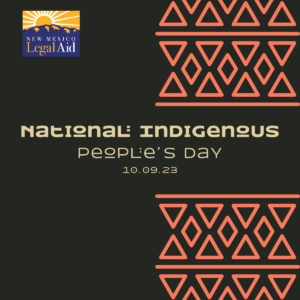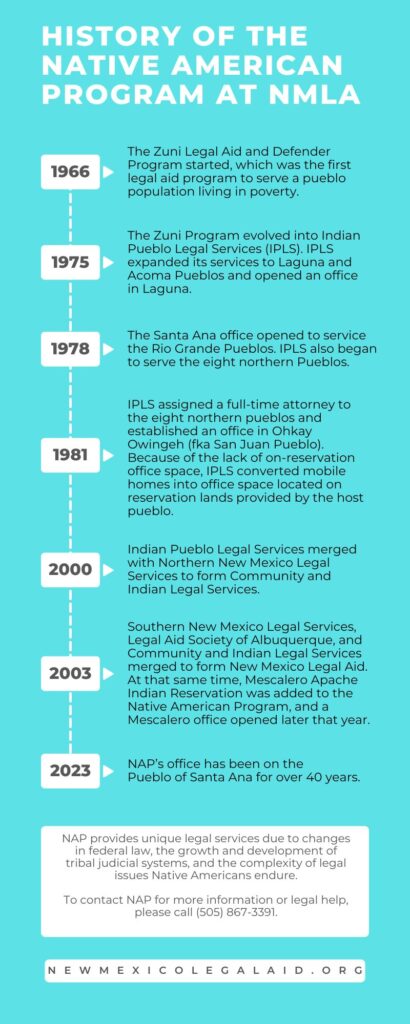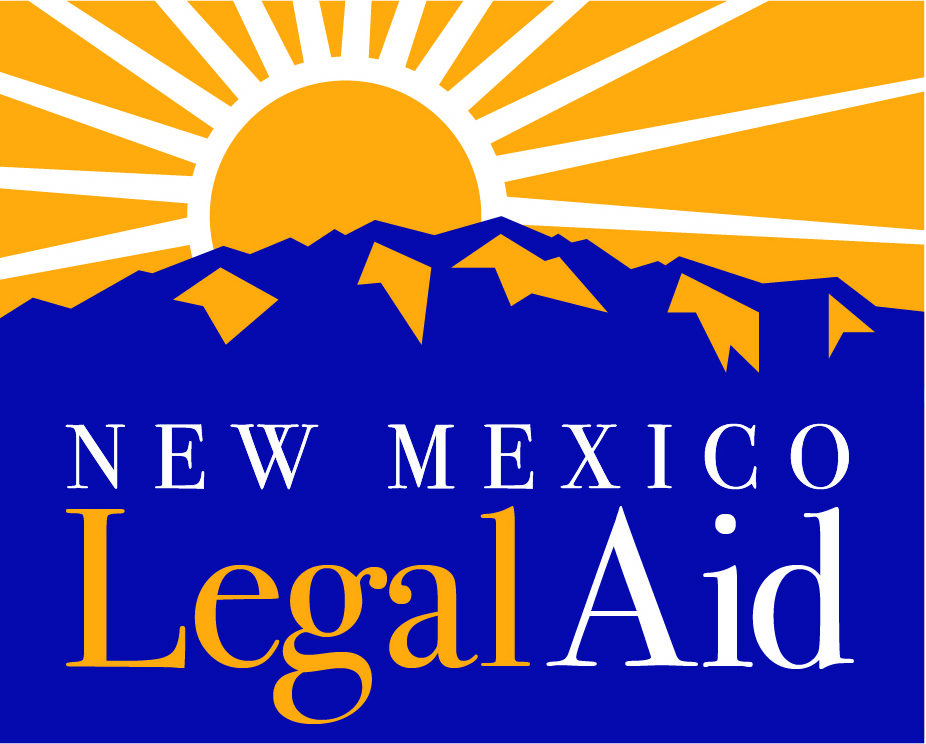Celebrating Two Decades of the Native American Program at New Mexico Legal Aid
 In New Mexico, the homeland of a myriad of peoples and their vibrant cultures, a beacon of hope and advocacy stands tall: the Native American Program (NAP) at New Mexico Legal Aid. This year, as the state celebrates Indigenous Peoples’ Day, New Mexico Legal Aid and the Native American Program commemorate
In New Mexico, the homeland of a myriad of peoples and their vibrant cultures, a beacon of hope and advocacy stands tall: the Native American Program (NAP) at New Mexico Legal Aid. This year, as the state celebrates Indigenous Peoples’ Day, New Mexico Legal Aid and the Native American Program commemorates its 20th milestone year of service to the Indigenous community.
What started as Zuni Legal Aid and Defender Program in 1966 has evolved through several name changes, and legal services have expanded to all Pueblo communities in New Mexico over the past 50 years. “But our mission has been consistent and clear for many decades,” reflects Lisa Chavez, the Interim Director of NAP. “We stand alongside our Native peoples, safeguarding their rights, ensuring access to justice in the forums they live, and advancing tribal justice systems.”
Native American Population of New Mexico
Indigenous Peoples’ Day is a profound moment of recognition for the original inhabitants of the Americas. As the country pauses to honor the legacy of its first people and the Tribal Nations that flourish today, there’s no better time to spotlight the NAP’s dedication to the Native American population of New Mexico.
With 12% of New Mexico’s population identifying as Native American, the state ranks third in the nation by indigenous population share. For New Mexico, it translates to over 260,000 individuals with rich histories, traditions, and narratives.
“From the Pueblos of Acoma and Laguna to the Apache tribes and the vast Navajo Nation, our state is a mosaic of indigenous cultures,” Chavez noted. “Each of these 23 sovereign tribes has its unique identity, challenges, and aspirations.”
NAP’s Services and Stories of Impact
What truly sets NAP apart is its unwavering dedication to providing free legal services to the underserved. Their purview, shaped by federal grants, spans numerous Pueblos and the Mescalero Indian Reservation. Their areas of expertise are vast, encompassing everything from government benefits and consumer rights to family law and Federal Indian and Tribal law issues.
NAP’s impact is evident, especially with its work in the Pueblo court systems. Just in the recent three-month span, they’ve handled 82 cases. One specific case stands out. In the heart of the Pueblo community, a concerned mother found herself embroiled in a heart-wrenching situation.
It all began when the child’s father accused her elder child of inappropriate behavior towards the younger ones. Such a claim couldn’t be taken lightly. The Pueblo’s Department of Social Services, backed by the Police Department, quickly swung into action to investigate the claims. However, after extensive probing, they found the allegations baseless.
In many tribal communities, grandparents play a significant role in children’s lives. Here, out of an abundance of caution, the grandparents sought legal means to remove them from their mother’s care by filing a Petition for Guardianship. At an Emergency Hearing on the Petition for Guardianship, the Pueblo noted that they re-opened the investigation. At that hearing, in an effort to cooperate with the process, the mother allowed the younger children to reside with grandparents during the investigation.
The mother then reached out to the Native American Program (NAP) for legal assistance. Acting swiftly, NAP filed a decisive “Notice of Withdrawal of Consent” to the children’s temporary placement and, more importantly, a “Motion to Dismiss Petition.” Their argument was clear: the Petition for Guardianship was inappropriately filed based on the Pueblo’s contemporary legal codes and procedures. The Court, resonating with NAP’s arguments, declared the petition contrary to the Pueblo’s Children’s code and dismissed the Petition. Her children were returned to her. Balance was restored, and a mother’s love triumphed.
History of NAP
 NAP’s journey has been far from linear. Its roots can be traced back to 1966 with the inception of the Zuni Legal Aid and Defender Program, the first of its kind aimed at aiding the Pueblo population. Over the decades, through mergers, expansions, and collaborations, the program has evolved and adapted, always with the singular goal of amplifying indigenous voices.
NAP’s journey has been far from linear. Its roots can be traced back to 1966 with the inception of the Zuni Legal Aid and Defender Program, the first of its kind aimed at aiding the Pueblo population. Over the decades, through mergers, expansions, and collaborations, the program has evolved and adapted, always with the singular goal of amplifying indigenous voices.
2003 marked a pivotal year in NAP’s journey, seeing it merge with two major legal aid societies to form New Mexico Legal Aid. This merger further broadened their outreach, with the Mescalero Apache Indian Reservation becoming an integral part of their service.
For over 40 years, the NAP’s office has proudly stood on the Pueblo of Santa Ana lands, a testament to its longstanding commitment. Chavez notes, “The changing federal laws, the evolution of tribal judicial systems, and the intricate legal challenges our Native Americans face make our services not only unique but also critically essential.”
What Cases NAP Handles
In the midst of their expansive achievements, NAP remains grounded. They acknowledge that the resources at their disposal can’t cater to every legal challenge. “While the heart wants to serve all, our mission focuses on where we can make the most meaningful impact,” Chavez admits.
That focus is underscored by the program’s thorough evaluation process. Every case is meticulously examined for its merits, the potential for positive outcomes, and alignment with NAP’s mission of fostering family and economic stability.
As the world grows more interconnected, the legal issues that the Native American community faces become more multifaceted. NAP’s role in navigating these complexities is more crucial than ever. Chavez passionately concludes, “At the crossroads of tradition and modernity, NAP continues its promise to advocate for the rights of New Mexico’s indigenous people.”
For those seeking the NAP’s guidance or more information, a call to (505) 867-3391 is the first step towards justice and empowerment.

